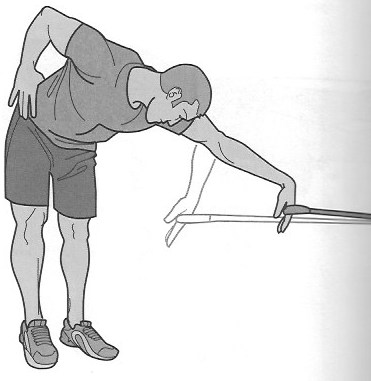What to do when the pools are closed?
Recently I’ve been telling triathletes who live where pools are still closed due to Covid to do some strength-endurance training at home with an elastic stretch cord. But it must be done with good technique or there is some risk of injuring the shoulder. Unfortunately, most age group swimmers use a technique I call the “tugboat”—they swim with no longitudinal roll so the shoulders remain parallel with the wall they are swimming toward in the pool. This puts a lot of stress on the small shoulder muscles and is likely to cause a shoulder injury. These small muscles weren’t meant to pull the body through the water.
The PDLC method
In my Triathlete’s Training Bible, 4th edition, I describe a method I teach at my camps called PDLC, which stands for posture, direction, length, and catch. The “L”—length—has to do with rolling the torso so that the latissimus dorsi (lats) are the primary movers. Those are much bigger muscles and less likely to be injured when swimming. The trick, for most age groupers, is getting into this position. In the drawing below, note the slight roll onto the right side allowing for a longer reach. This also reduces drag in the water, much as an aero position reduces drag on a bike.

Also note that the right hand is reaching well in front of the shoulder and the hand is already in the “Catch” position with fingers pointed down. This is the same position you need to emulate when doing dryland training with a stretch cord as shown here.

Notice that the shoulders and torso are slightly rolled to the left side with feet pointing a bit to the right. This puts you in a position that is about as close as you can get to Length and Catch using the elastic band.
This is a good exercise for building swim strength while also focusing on technique. By doing several reps of this exercise regularly you can ingrain the technique, which will seem strange at first, while also developing strength and endurance for when you’re back in the water again.
For more details on PDLC, check out The Triathlete’s Training Bible.

You must be logged in to post a comment.